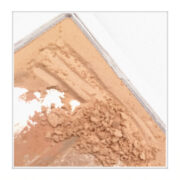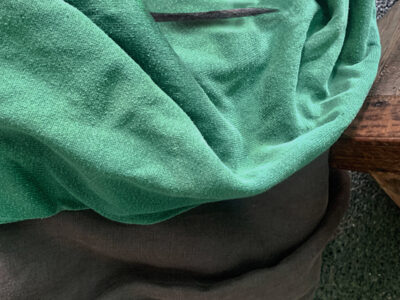Not An Allergen
Retinoids
These wonderful ingredients are gold standard mainstays in dermatology for good reason: they’re really effective! Retinoids are not top contact allergens but — as is the case with most effective active ingredients — they are irritants.
Retinoids are derived from vitamin A and have similar benefits but differ in strength, efficacy, and irritability. There are four types of retinoids that are commonly used: retinoic acid, retinol, retinaldehyde, and retinyl palmitate. All are touted for their efficacy at increasing the epidermal turnover rate (desquamation: shedding off old, dead cells and getting bright, new skin cells to the surface). This makes the skin look younger, gives it a radiant glow, and can also help keep pores clear, treat acne, and lighten hyperpigmenations. There are two other topical retinoids that are less well known: adapalene, which is also fairly mild and tazarotene, used for acne and psoriasis.
The strongest of the four most common retinoids, and a drug only available with a prescription, is retinoic acid (tretinoin). It is the most effective but also the most irritating, with the most side effects. Retinyl palmitate sacrifices some efficacy but is the least irritating. Retinol and retinaldehyde fall in the middle of the spectrum, with more efficacy and risk of irritation than retinyl palmitate, but less efficacy and risk of irritation than retinoic acid.
For all retinoids:
- Apply a powerful sun and light screen that protects against UVB, UVA, Visible Light, and Infrared Rays every single day, whether you’re outdoors or indoors, and whether or not the retinoid has been applied on a given day. When outdoors, take further care: avoid the sun and use a hat, a long-sleeved top and long pants, or even an umbrella. Like many active ingredients, retinoids make your skin more photosensitive.
- When using retinoids, increase application frequency slowly.
- If redness or peeling occurs, you may be experiencing an irritant reaction (see It’s Complicated: Allergic Versus Irritant Reaction). Tell your doctor and stop treatment until the irritation subsides.
- Do not use retinoids if you are pregnant. This is mostly an issue for internally taken drugs as it is unlikely for most topically-applied products to penetrate the epidermis and dermis to get the the bloodstream. As well (except for tazatotene and some lightening formulations which are often used on 20% or more of the body), retinoids are most often applied on the face, which is only 1.5-2% of the body’s surface area. Retinoids are, however, known teratogens (they affect fetal development) so avoiding them even in topical preparations is being extra cautious.
- Because retinoids are irritants, make sure that all the other products that you’re using are free of allergens, photo-allergens, and irritants.
If you have a history of sensitive skin…
…don’t guess! Random trial and error can cause more damage. Ask your dermatologist about a patch test.
To shop our selection of hypoallergenic products, visit vmvhypoallergenics.com. Need help? Ask us in the comments section below, or for more privacy (such as when asking us to customize recommendations for you based on your patch test results) contact us by email, or drop us a private message on Facebook.
For more:
- On the prevalence of skin allergies, see Skin Allergies Are More Common Than Ever.
- For the difference between irritant and allergic reactions, see It’s Complicated: Allergic Versus Irritant Reaction.
- For the difference between food, skin, and other types of reactions: see Skin & Food Allergies Are Not The Same Thing.
- On the differences between hypoallergenic, natural, and organic, check out Is Natural Hypoallergenic? and this video in our YouTube channel.
- To learn about the VH-Rating System and hypoallergenicity: What Is The Validated Hypoallergenic Rating System?
Main References:
Regularly published reports on the most common allergens by the North American Contact Dermatitis Group and European Surveillance System on Contact Allergies (based on over 28,000 patch test results, combined), plus other studies. Remember, we are all individuals — just because an ingredient is not on the most common allergen lists does not mean you cannot be sensitive to it, or that it will not become an allergen. These references, being based on so many patch test results, are a good basis but it is always best to get a patch test yourself.
1. Warshaw, E.M., Maibach, H.I., Taylor, J.S., et al. North American contact dermatitis group patch test results: 2011-2012. Dermatitis. 2015; 26: 49-59.
2. W Uter et al. The European Baseline Series in 10 European Countries, 2005/2006–Results of the European Surveillance System on Contact Allergies (ESSCA). Contact Dermatitis 61 (1), 31-38.7 2009.
3. Wetter, DA et al. Results of patch testing to personal care product allergens in a standard series and a supplemental cosmetic series: An analysis of 945 patients from the Mayo Clinic Contact Dermatitis Group, 2000-2007. J Am Acad Dermatol. 2010 Nov;63(5):789-98.
4. Verallo-Rowell VM. The validated hypoallergenic cosmetics rating system: its 30-year evolution and effect on the prevalence of cosmetic reactions. Dermatitis 2011 Apr; 22(2):80-97.
5. Ruby Pawankar et al. World Health Organization. White Book on Allergy 2011-2012 Executive Summary.
6. Misery L et al. Sensitive skin in the American population: prevalence, clinical data, and role of the dermatologist. Int J Dermatol. 2011 Aug;50(8):961-7.
7. Warshaw EM1, Maibach HI, Taylor JS, Sasseville D, DeKoven JG, Zirwas MJ, Fransway AF, Mathias CG, Zug KA, DeLeo VA, Fowler JF Jr, Marks JG, Pratt MD, Storrs FJ, Belsito DV. North American contact dermatitis group patch test results: 2011-2012.Dermatitis. 2015 Jan-Feb;26(1):49-59.
8. Warshaw, E et al. Allergic patch test reactions associated with cosmetics: Retrospective analysis of cross-sectional data from the North American Contact Dermatitis Group, 2001-2004. J AmAcadDermatol 2009;60:23-38.
9. Foliaki S et al. Antibiotic use in infancy and symptoms of asthma, rhinoconjunctivitis, and eczema in children 6 and 7 years old: International Study of Asthma and Allergies in Childhood Phase III. J Allergy Clin Immunol. 2009 Nov;124(5):982-9.
10. Kei EF et al. Role of the gut microbiota in defining human health. Expert Rev Anti Infect Ther. 2010 Apr; 8(4): 435–454.
11. Thavagnanam S et al. A meta-analysis of the association between Caesarean section and childhood asthma. Clin Exp Allergy. 2008;38(4):629–633.
12. Marks JG, Belsito DV, DeLeo VA, et al. North American Contact Dermatitis Group patch-test results, 1998 to 2000. Am J Contact Dermat. 2003;14(2):59-62.
13. Warshaw EM, Belsito DV, Taylor JS, et al. North American Contact Dermatitis Group patch test results: 2009 to 2010. Dermatitis. 2013;24(2):50-99.
14. Verallo-Rowell V. M, Katalbas S.S. & Pangasinan J. P. Natural (Mineral, Vegetable, Coconut, Essential) Oils and Contact Dermatitis. Curr Allergy Asthma Rep 16,51 (2016) . https://doi.org/10.1007/s11882-016-0630-9.
15. Park G, Oh DS, Lee MG, Lee CE, Kim YU. 6-Shogaol, an active compound of ginger, alleviates allergic dermatitis-like skin lesions via cytokine inhibition by activating the Nrf2 pathway. Toxicol Appl Pharmacol. 2016 Nov 1;310:51-59. doi: 10.1016/j.taap.2016.08.019. Epub 2016 Aug 22. PMID: 27562088.
16. de Groot AC. Monographs in Contact Allergy, Volume II – Fragrances and Essential Oils. Boca Raton, FL: CRC Press Taylor & Francis Group; 2019.
17. De Groot AC. Monographs in Contact Allergy Volume I. Non-Fragrance Allergens in Cosmetics (Part I and Part 2). Boca Raton, Fl, USA: CRC Press Taylor and Francis Group, 2018.
18. Han G et al. Use of Topical Tazarotene for the Treatment of Acne Vulgaris in Pregnancy: A Literature Review. J Clin Aesthet Dermatol. 2020;13(9):E59-E65.
Want more great information on contact dermatitis? Check out the American Contact Dermatitis Society, Dermnet New Zealand, the Contact Dermatitis Institute, and your country’s contact dermatitis association.
Laura is our “dew”-good CEO at VMV Hypoallergenics and eldest daughter of VMV’s founding dermatologist-dermatopathologist. She has two children, Madison and Gavin, and works at VMV with her sister CC and husband Juan Pablo (Madison and Gavin frequently volunteer their “usage testing” services). In addition to saving the world’s skin, Laura is passionate about health, inclusion, cultural theory, human rights, happiness, and spreading (like a VMV cream!) goodness!






[…] ingredient like glycolic acid (Re-Everything), salicylic acid (Id), mandelic acid (Superskin), or retinoic acid. Remember to follow instructions when using active ingredients, such as a slow increase in […]